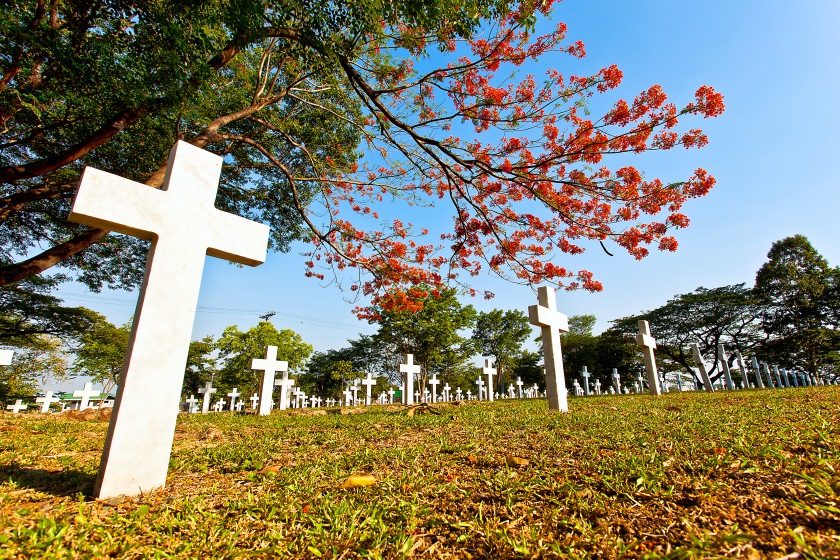Susan comes from a small rural village in the Visayas. Her family lives a hand-to-mouth existence, tilling soil that is not theirs. In September 1972, when Marcos declared martial law, and in the years that followed, their lives carried on as usual. Martial law merely passed them by with nary a scrape. With vague recollections of that period, it comes as no surprise that Susan’s family feels nothing towards the issue of Marcos’ burial in the Libingan ng mga Bayani. Susan herself, despite a first year college education, believes that the burial is just and right for one who has been president of the country.
Susan’s reactions resonate with the throng of commenters on social media who feel strongly that Ferdinand Marcos is a hero. Some would label them as ‘ignorantly deluded,’ much like the holocaust deniers who believe that the holocaust was a figment of the German Jews’ imaginations, an event created to justify the subsequent occupation of Palestinian territories in Israel. But one cannot simply deny the murder of more than six million Jews, the gas chambers, the labor camps. Across Europe, we can find memorials of the atrocity dotting the landscape. In remembrance.
In the same way, we cannot deny the thousands of deaths during martial law – deaths that resulted from speaking out against the tyranny of the Marcos dictatorship; we cannot ignore the thousands more who were imprisoned, tortured, and raped for fighting for rights that were lost, for pushing for the common good; we cannot invalidate the people who took to the streets and risked being truncheoned and tear-gassed, who risked imprisonment, torture, and death because they understood the implications of such a ruthless exercise of power. For them, and for many of us, martial law lingers and festers like a cancer that does not heal.
But memory is both spatial and social. It may seem that the tentacles of martial law reached far and wide, cutting across space and social class and forming part of the Filipinos’ collective memory, but the plurality of martial law narratives tells otherwise. Certain groups – Marcos cronies, those in the fringes and forgotten spaces -insist on a different story. For the latter in particular, martial law days played out just like any other. Susan’s family and many in their community affirm so. They believe that heroism lies in one’s having been president and they have constructed a reality that readily accepts the fabrications perpetuated by the Marcoses and their supporters. They cling to the false notion of economic growth and peace and order during the Marcos period. And past administrations and leaders have done little to discourage this. In negotiating and interpreting martial law memory, they let political gains prevail, preventing communal remembrance and impeding a clear articulation and representation of the majority’s martial law experiences in the public sphere.
Indeed, in order for an event to be remembered, it has to be embedded in the landscape. But despite how much we say that we should never forget, despite having friends, family members, neighbors who suffered the physical effects of striving for freedom from dictatorship, the stain of martial law remains blatantly absent from the landscape. We have scarce memorials and monuments, and hardly any ceremonies and rituals of remembrance. And Susan’s experience tells us that not all schools are wont to discuss this chapter of history to Filipino students.
Many of us have in fact been complacent. We should have put our foot down in 1991, when the Marcoses were allowed to return to the country; in 1994/1995, when the matriarch ran for congress easily; and in 2009, when the son staked his own claim to office.
Where was the rage then?
President Duterte and the nine Supreme Court justices are not the only ones to blame. We should have advocated for measures to prevent that family from regaining a foothold in the country, given that previous administrations seem to have been playing the political card. In the name of reconciliation -read: political advantages – past administrations have enabled this forgetting. And only now do we protest.
We are all to blame for paving the way for Ferdinand Marcos’ burial in the Libingan ng mga Bayani. We have given that family the ability to appropriate the landscape and write their version of history. We have enabled them to reclaim control and make their definitions of heroism and forgiveness worm their way into the nation’s consciousness, particularly among those who have remained in forgotten spaces or who do not share in the majority’s collective experiences.
We would like to think that there is still hope. We can resume the fight, etch the atrocities of martial law in public space, free the Libingan ng mga Bayani from false heroes. But in making sure that we never again will forget, we need to dialogue with other narratives lest we risk further dividing an already fractured nation.
—
The Editors
November 2016
Featured image taken from this site.
